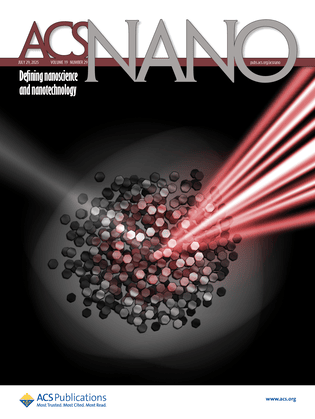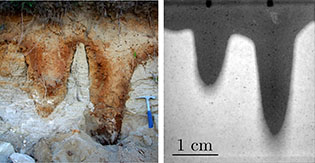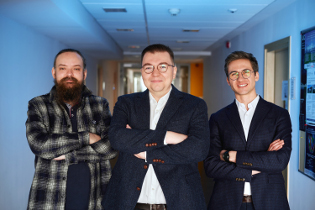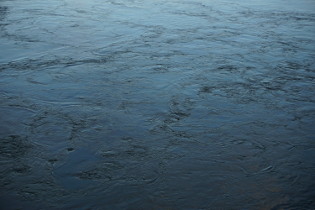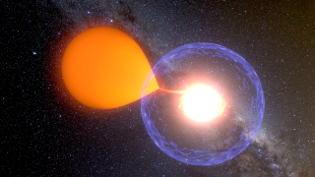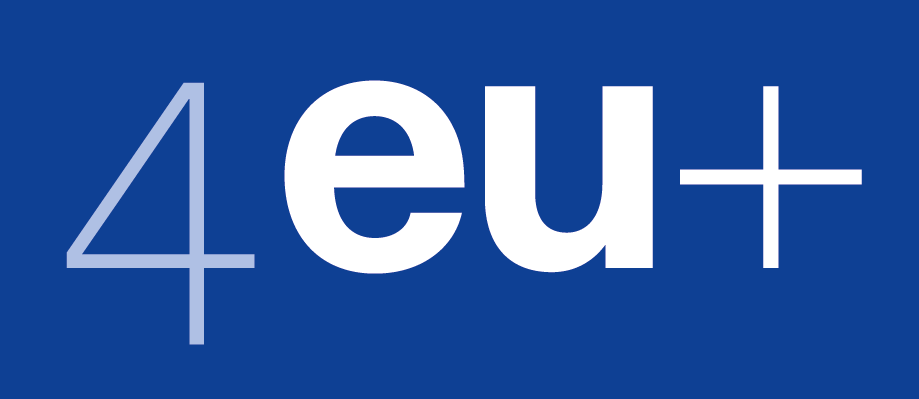Faculty of Physics
Welcome to the website of the Faculty of Physics at the University of Warsaw
The Faculty of Physics is a large research and teaching center. It consists of The Institutes of Theoretical Physics, Experimental Physics, Geophysics, The Astronomical Observatory and The Department of Mathematical Methods in Physics.
The Faculty is regarded as one of the best in the country, recognized internationally for the high quality of research and education.
News
FUW students visit Brno – learning nuclear energy in practice
Between 19 and 21 October 2025, students of the nuclear Energy programme and the nuclear reactor physics specialization (physics programme) at the Faculty of Physics, University of Warsaw, accompanied by professor Agnieszka Korgul, took part in an educational trip to Brno. The purpose of the visit was to familiarize students with research infrastructure and the practical aspects of radioactive waste management in the Czech Republic – a country with a well developed nuclear energy sector. | More
FUW students visit the National Radioactive Waste Repository in Różan
On 13 October 2025, students of the nuclear energy programme and the nuclear reactor physics specialization at the Faculty of Physics, University of Warsaw, took part in an educational visit to the National Radioactive Waste Repository (KSOP) in Różan. This facility is the only site in Poland designated for the storage of low- and intermediate-level radioactive waste. The repository is located on the grounds of a former Russian military fort and has been in operation since 1961. | More
Student Research Groups and Research Teams Fair of the Faculty of Physics
This coming Monday, 27 October, from 10:00 a.m. to 1:00 p.m., Student Research Groups and Research Teams Fair will be held in Building A of the Faculty of Physics, University of Warsaw. Organised by the Student Council of the Faculty of Physics, University of Warsaw, the event is an excellent opportunity to learn about the activities of scientific clubs, join inspiring projects and find ideas for your own research path. The event is open to all students – both those who are just starting their studies and those looking for new scientific challenges or ideas for their dissertations. | More
Drip by drip: The hidden blueprint for stalagmite growth
Deep inside caves, water dripping from the ceiling creates one of nature’s most iconic formations: stalagmites. These pillars of calcite, ranging from centimeters to many meters in height, rise from the cave floor as drip after drip of mineral-rich water deposits a tiny layer of stone. Beyond their beauty - echoed in fanciful nicknames like the “Minaret” or the “Wedding Cake” – stalagmites are also natural archives, recording ancient climatic changes in their layered growth, much like tree rings. But what determines the shape of a stalagmite? Why do some grow into slender cones, others into massive columns, and still others into curious flat-topped forms? A new study by researchers from Poland, the USA, and Slovenia, published in the Proceedings of the National Academy of Sciences (PNAS), provides the first complete mathematical description of stalagmite shapes.| More
Quantum radio antenna
A team from the Faculty of Physics and the Centre for Quantum Optical Technologies, Centre of New Technologies at the University of Warsaw has developed a new type of all-optical radio receiver based on the fundamental properties of Rydberg atoms. The new type of receiver is not only extremely sensitive, but also provides internal calibration, and the antenna itself is powered only by laser light. The results of the work, in which Sebastian Borówka, Mateusz Mazelanik, Wojciech Wasilewski and Michał Parniak participated, were published in the prestigious journal Nature Communications. They open a new chapter in the technological implementation of quantum sensors.| More
A scientist from the University of Warsaw’s Faculty of Physics will head a new MAB Centre of Excellence
One of the four selected projects is the Centre of Excellence for Structured Optical Fibres and Applications (SOWA), which will be established at the Faculty of Physics of the University of Warsaw. The new unit will be headed by Professor Ryszard Buczyński, Deputy Director of the Institute of Geophysics at the Faculty of Physics, University of Warsaw. Under the MAB FENG programme, support is provided for the creation or development of specialized, world-leading research teams capable of achieving scientific excellence and international competitiveness. The total amount of funding awarded in this call reached nearly PLN 120 million. Out of 23 submitted proposals, four projects were selected for funding – three to be implemented in Warsaw and one in Poznań.| More
Delegation from Baden-Württemberg visited our Faculty
On 7 October 2025, the Faculty of Physics, University of Warsaw, hosted a delegation from Baden-Württemberg led by Petra Olschowski, Minister of Science, Research and the Arts of the federalstate. The delegation included members of the Baden-Württemberg Parliament as well asrepresentatives of leading universities and research institutions from the region. The visit providedan excellent opportunity to exchange experiences, present the scientific achievements andresearch infrastructure of the Faculty of Physics, and strengthen cooperation with universities andresearch institutions in Baden-Württemberg.| More
Amplifying collective light emission with atomic interactions
A team of physicists from the Faculty of Physics at the University of Warsaw, the Centre for New Technologies at the University of Warsaw (Poland), and Emory University (Atlanta, USA) analysed how atoms’ mutual interactions change the way they collectively interact with light. In a paper just published in Physical Review Letters, the researchers extend established models of this phenomenon. By showing that direct atom-atom interactions can strengthen a collective burst of light known as superradiance, the team points to new opportunities for quantum technologies.| More
Nobel Prize in Physics 2025 for the discovery of macroscopic quantum tunneling and energy quantization in an electric circuit
This year’s Nobel Prize in Physics has been awarded to:
John Clarke of the University of California, Berkeley, USA;
Michel H. Devoret of Yale University, New Haven, CT, USA;
and John M. Martinis of the University of California, Santa Barbara, CA, USA.The 2025 Nobel Prize in Physics was awarded “for the discovery of macroscopic quantum tunneling and the quantization of energy in an electrical circuit.”.| More
Next-Generation Quantum Communication
In the era of instant data exchange and growing risks of cyberattacks, scientists are seeking secure methods of transmitting information. One promising solution is quantum cryptography – a quantum technology that uses single photons to establish encryption keys. A team from the Faculty of Physics at the University of Warsaw has developed and tested in urban infrastructure a novel system for quantum key distribution (QKD). The system employs so-called high-dimensional encoding. The proposed setup is simpler to build and scale than existing solutions, while being based on a phenomenon known to physicists for nearly two centuries – the Talbot effect. The research results have been published in prestigious journals: “Optica Quantum”, “Optica”, and “Physical Review Applied”. | More
Gravitino, a new candidate for Dark Matter
Dark Matter remains one of the biggest mysteries in fundamental physics. Many theoretical proposals (axions, WIMPs) and 40 years of extensive experimental search failed to provide any explanation of the nature of Dark Matter. Several years ago, in a theory unifying particle physics and gravity, new, radically different Dark Matter candidates were proposed, superheavy charged gravitinos. Very recent paper in Physical Review Research by scientists from the University of Warsaw and Max Planck Institute for Gravitational Physics, shows how new underground detectors, in particular JUNO detector starting soon to take data, even though designed for neutrino physics, are also extremely well suited to eventually detect charged Dark Matter gravitinos. The simulations combining two fields, elementary particle physics and very advanced quantum chemistry, show that the gravitino signal in the detector should be unique and unambiguous. | More
Making the invisible visible: a new way to boost light emission at the nanoscale
Light still holds surprises – as demonstrated by researchers from the Ultrafast Phenomena Lab at the Faculty of Physics, University of Warsaw, in collaboration with the Institute of Low Temperature and Structure Research, Polish Academy of Sciences, who have discovered a new enhancement effect in the emission of upconverting nanoparticles. They demonstrated that simultaneous excitation of these nanostructures with two near-infrared beams of laser light leads to a significant increase in emission intensity. Under carefully chosen conditions, visible emission emerges only when both beams are applied together, even though neither beam alone produces any emission at all. This discovery paves the way for visualizing infrared radiation beyond the sensitivity range of standard detectors. The findings, potentially applicable in microscopy and photonic technologies, have been published in the prestigious journal “ACS Nano”. | More
Polish physicists co-discover “lonely” spinons - a new step towards quantum technologies
Researchers from the Faculty of Physics at the University of Warsaw and the University of British Columbia have described how a so-called lone spinon - an exotic quantum excitation that is a single unpaired spin - can arise in magnetic models. The discovery deepens our understanding of the nature of magnetism and could have implications for the development of future technologies such as quantum computers and new magnetic materials. The findings were published in the renowned journal “Physical Review Letters.”. | More
New photonic platform developed by Polish research team
A team of researchers from the Faculty of Physics at the University of Warsaw, the Military University of Technology, and the Institut Pascal at Université Clermont Auvergne has developed a novel method for using cholesteric liquid crystals in optical microcavities. The platform created by the researchers enables the formation and dynamic tuning of photonic crystals with integrated spin-orbit coupling (SOC) and controlled laser emission. The results of this groundbreaking research have been published in the renowned journal “Laser & Photonics Reviews”. | More
A drop hollows out the stone... and records the climate's history
Water reshapes the Earth through slow, powerful erosion, carving intricate landscapes like caves and pinnacles in soluble rocks such as limestone. An international team from the Faculty of Physics at the University of Warsaw, the University of Florida, and the Institute of Earth Sciences in Orléans has discovered that vertical channels, known as karstic solution pipes, preserve a record of Earth’s climatic history. Their study, published in Physical Review Letters, reveals that these pipes evolve with time into an invariant shape, a fixed, ideal form that remains unchanged as the pipes deepen, encoding ancient rainfall patterns. | More
Quantum control of collisions beyond ultralow temperatures
At ultracold temperatures, interatomic collisions are relatively simple, and their outcome can be controlled using a magnetic field. However, research by scientists led by Prof. Michal Tomza from the Faculty of Physics of the University of Warsaw and prof. Roee Ozeri from the Weizmann Institute of Science shows that this is also possible at higher temperatures. The scientists published their observations in the scientific journal “Science Advances”. | More
From classical hydrodynamics to quantum hydrodynamics and back again – how the Navier-Stokes equations describe quantum systems
Although the Navier-Stokes equations are the foundation of modern hydrodynamics, adopting them to quantum systems has so far been a major challenge. Researchers from the Faculty of Physics at the University of Warsaw, Maciej Łebek, M.Sc. and Miłosz Panfil, Ph.D., Prof. UW, have shown that these equations can be generalised to quantum systems, specifically quantum liquids in which the motion of particles is restricted to one dimension. This discovery opens up new avenues for research into transport in one-dimensional quantum systems. The paper, published in the prestigious Physical Review Letters, was awarded an ‘editors’ suggestion'. | More
A new class of cosmic X-ray sources discovered
An international team of astronomers, led by researchers from the Astronomical Observatory of the University of Warsaw, have identified a new class of cosmic X-ray sources. The findings have been published in „Astrophysical Journal Letters”. | More
Upcoming events
 2025-11-06 (10:15) :: Nuclear Physics Seminar
2025-11-06 (10:15) :: Nuclear Physics Seminar
Observation of the antimatter hypernucleus at STAR
 2025-11-06 (10:15) :: Optics Seminar
2025-11-06 (10:15) :: Optics Seminar
Optical metrology of atomic and molecular systems
 2025-11-06 (10:15) :: "Theory of Duality" (KMMF) Seminar
2025-11-06 (10:15) :: "Theory of Duality" (KMMF) Seminar
New uniqueness results for high temperature KMS states
 2025-11-06 (11:15) :: Biomedic Physics Seminar
2025-11-06 (11:15) :: Biomedic Physics Seminar
Dynamika ruchu w kontekście identyfikacji osób korzystających z VR
 2025-11-06 (11:15) :: Joint Seminar on Quantum Information and Technologies
2025-11-06 (11:15) :: Joint Seminar on Quantum Information and Technologies
Efficient Quantum Measurements: Computational Max- and Measured Rényi Divergences and Applications
 2025-11-06 (12:15) :: Seminar "Theory of Particle Physics and Cosmology"
2025-11-06 (12:15) :: Seminar "Theory of Particle Physics and Cosmology"
Quantum entanglement in perturbative scattering
 2025-11-06 (12:15) :: Photonics Seminar
2025-11-06 (12:15) :: Photonics Seminar
Development and application of a two-dimensional superresolution microscope
 2025-11-06 (15:15) :: Gamma Seminar
2025-11-06 (15:15) :: Gamma Seminar
A symplectic viewpoint on the restricted three body problem
 2025-11-07 (09:30) :: Soft Matter and Complex Systems Seminar
2025-11-07 (09:30) :: Soft Matter and Complex Systems Seminar
Diffusive transport in network models of dissolution in porous media
 2025-11-07 (10:15) :: Solid State Physics Seminar
2025-11-07 (10:15) :: Solid State Physics Seminar
Magnetic tunnel junctions for memory and dynamics applications
Research Highlights
Joint neutrino oscillation analysis from the T2K and NOvA experiments
The NOvA Collaboration., The T2K Collaboration (Haradhan Adhikary, Mariusz Girguś, Prithivraj Govindaraj, Yashwanth Prabhu, Magdalena Posiadała - Zezula et al.)
Nature 646, 818–824 (2025)
DOI:10.1038/s41586-025-09599-3
The NOvA Collaboration., The T2K Collaboration (Haradhan Adhikary, Mariusz Girguś, Prithivraj Govindaraj, Yashwanth Prabhu, Magdalena Posiadała - Zezula et al.)
Nature 646, 818–824 (2025)
DOI:10.1038/s41586-025-09599-3
Coordination-driven design principles for boron fullerenes and borophenes: a predictive framework linking theory and experiment
Nevill Gonzalez Szwacki
2025 2D Mater. 12 045024
DOI:10.1088/2053-1583/ae1514
Nevill Gonzalez Szwacki
2025 2D Mater. 12 045024
DOI:10.1088/2053-1583/ae1514
Optically-biased Rydberg microwave receiver enabled by hybrid nonlinear interferometry
S. Borówka, M. Mazelanik, W. Wasilewski, M. Parniak
Nature Communications 16, 8975 (2025)
DOI:10.1038/s41467-025-63951-9
S. Borówka, M. Mazelanik, W. Wasilewski, M. Parniak
Nature Communications 16, 8975 (2025)
DOI:10.1038/s41467-025-63951-9
Memristive Behavior in Carrier Accumulation-Based Optical Modulators
Korneluk A., Brańko K., Stefaniuk T.
Nano Letters, 2025, vol. 25(40), pp. 14600 - 14607
DOI:10.1021/acs.nanolett.5c03443
Korneluk A., Brańko K., Stefaniuk T.
Nano Letters, 2025, vol. 25(40), pp. 14600 - 14607
DOI:10.1021/acs.nanolett.5c03443
Role of Matter Interactions in Superradiant Phenomena
João Pedro Mendonça, Krzysztof Jachymski, and Yao Wang
Phys. Rev. Lett. 135, 133601 (2025)
DOI:10.1103/z8gv-7yyk
João Pedro Mendonça, Krzysztof Jachymski, and Yao Wang
Phys. Rev. Lett. 135, 133601 (2025)
DOI:10.1103/z8gv-7yyk
Upcoming Conferences & Events
Sympozjum Instytutu Fizyki Doświadczalnej
Wydział Fizyki UW, Warszawa, 5-6 grudnia 2025 r.
Job offers
2025-10-27 :: PhD student research scholarship: High-dimensional entanglement in an integrated optical platform
2025-10-10 :: Visiting researcher: Tunable single photon sources in hyperbolic and epsilon-near-zero metamaterials
2025-10-10 :: Assistant Professor (adiunkt), research and teaching: Physics, nuclear energy, thermohydraulics
2025-04-30 :: Assistant professor, research academics [40/2025]

















